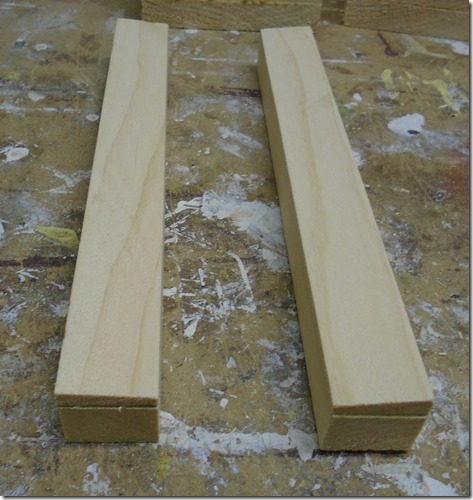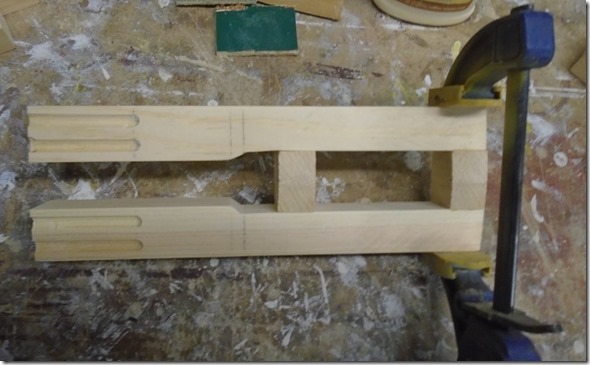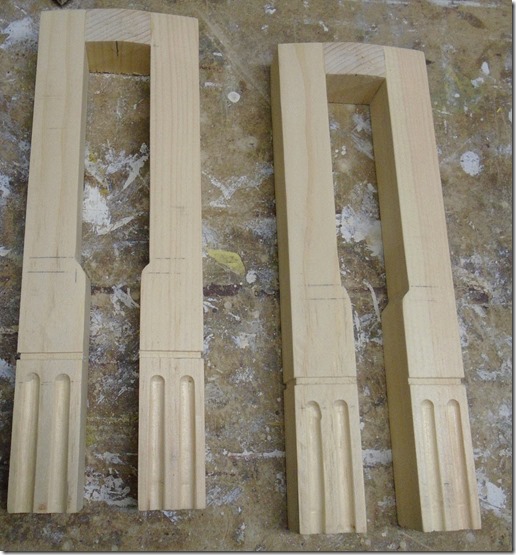In my last post I built the top part of the booster covers, in this one I will show how I made the “leg” portion.
I started by gluing up some pine to make blocks big enough for the legs. This is enough to make four legs, two for each side.,

I cut these to width and height, with the proper top angle, on the table saw.

I cut them to length on the miter saw and then marked where the recessed area needs to be cut out.

I started the cut using the table saw to be sure I got a nice straight cut. When making these sorts of cuts on the table saw, remember that the cut is going to go deeper at the bottom the then top so you need to stop short of the line.

I finished the cuts on the band saw and then did some sanding to clean them up.

The next step was to do the flutes on the bottom of each leg. I did this with a fluting bit in the router table. The marks on the tape indicate the edges of the router bit and were used to set a stop block, seen on the right, to define the end of the cut. In hind sight I probably should have made the flute cuts before make the cut that formed the narrower portion of the piece. With that cut made I could only run the flat side against the fence which required me to do four different setups to get the four flutes. If I could have used either side against the fence I could have done it with just two setups.

Here are the parts with the flutes cut.

The next step was to create the block that connects the two legs together. I made the piece slightly taller then the legs and will sand it to the right height after the pieces have been glued up.

To glue the pieces together I used a second block the same width to keep the legs parallel.

The final step was to cut the groove just above the flutes which I did on the table saw. I did it after the pieces were glued up, although I don’t remember why I didn’t do this before gluing up the pieces.

